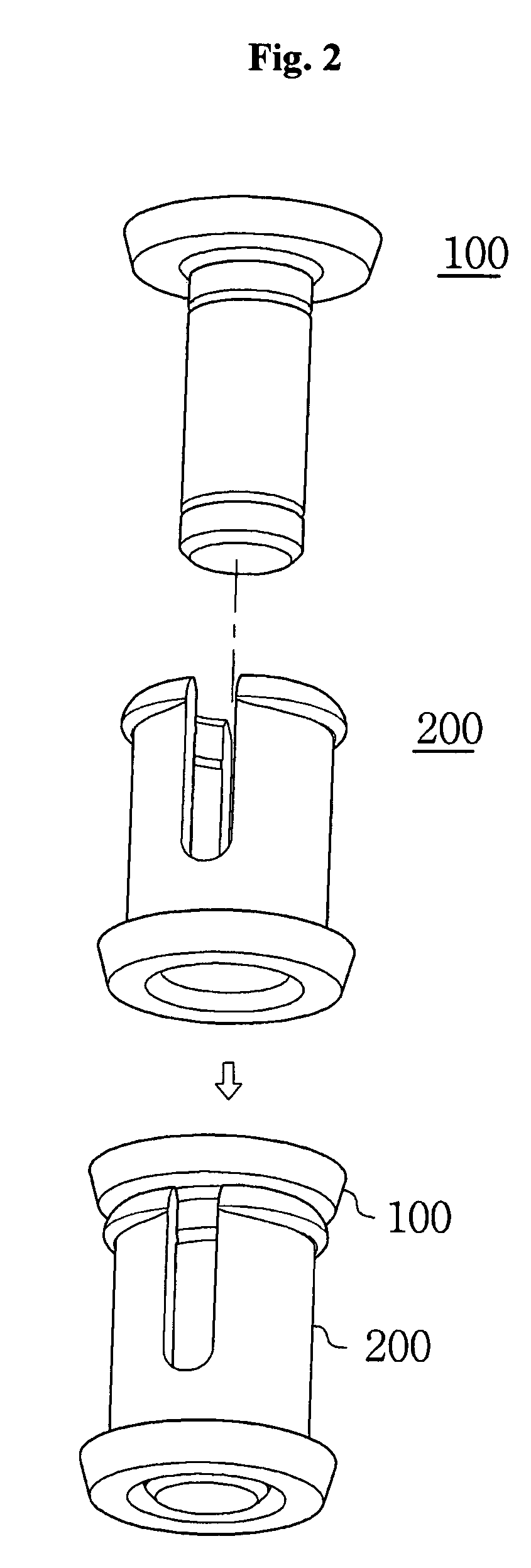Elastic fastener and actuator module using the same
a technology of elastic fasteners and actuators, applied in the direction of snap fasteners, buckles, couplings, etc., can solve the problems of plastic debris, thread wear and damage, friction between the bolt head and the tool, etc., and achieve the effect of easy assembly and disassembly
- Summary
- Abstract
- Description
- Claims
- Application Information
AI Technical Summary
Benefits of technology
Problems solved by technology
Method used
Image
Examples
Embodiment Construction
[0077]Hereinafter, an exemplary embodiment of the present invention will be described with reference to the accompanying drawings. In the following description and drawings, the same reference numerals are used to designate the same or similar components, and so repetition of the description of the same or similar components will be omitted.
[0078]Referring to FIGS. 1 and 2, an elastic fastener is established by coupling the fixing pin 100 to the socket 200, both of which are configured so that the fixing pin 100 can be inserted into the socket 200 from either end.
[0079]The elastic fastener is adapted to efficiently fasten joint members 500 and 600 having a number of insertion holes which are symmetric about the midplane of the thickness of the member, and which are arrayed in a uniform lattice, as shown in FIG. 9.
[0080]FIG. 3 shows the basic configuration of the fixing pin 100, which includes a head 110 acting as a handle and a shaft 120 extending along the central axis of the head ...
PUM
 Login to View More
Login to View More Abstract
Description
Claims
Application Information
 Login to View More
Login to View More - R&D
- Intellectual Property
- Life Sciences
- Materials
- Tech Scout
- Unparalleled Data Quality
- Higher Quality Content
- 60% Fewer Hallucinations
Browse by: Latest US Patents, China's latest patents, Technical Efficacy Thesaurus, Application Domain, Technology Topic, Popular Technical Reports.
© 2025 PatSnap. All rights reserved.Legal|Privacy policy|Modern Slavery Act Transparency Statement|Sitemap|About US| Contact US: help@patsnap.com



